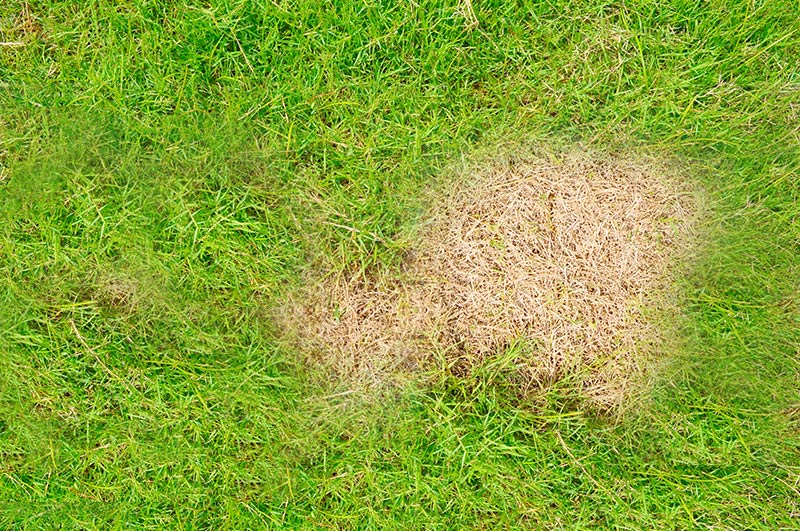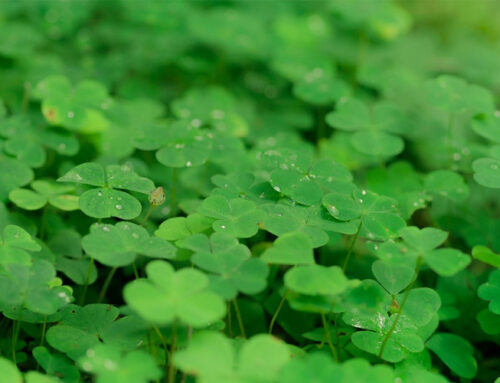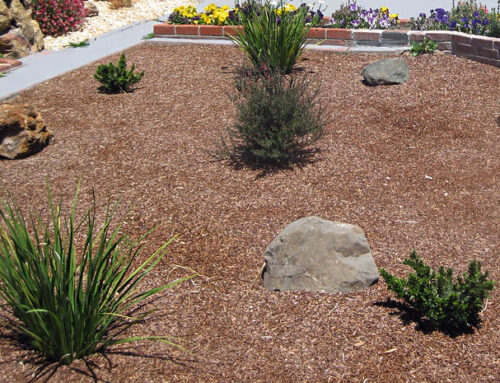Whether you have on brown spot right in the middle of an otherwise lush and healthy lawn, or brown patches scattered all over a lawn that is struggling, it’s easy to get frustrated. How do you make sure that your lawn gets even treatment so that the whole thing is green? It can be a challenge to narrow down the cause and figure out how to treat it. Here’s how to get rid of brown spots on your lawn, no matter what is causing it.
Address Thatch
Brown spots might be old thatch. Thatch is a layer of dead grass at the base of the healthy grass. If it is allowed to develop too thickly, it will restrict the growth of the new grass. Then, it will choke it out, leaving big yellow spots that may slowly turn brown in water. To fix thatch, all you have to do is aerate the lawn. This process removes chunks of soil and the thatch so that the grass has room to breathe again.
Stop Overwatering & Improve Drainage
Brown patches of grass may be a fungus called brown spot. Or, they may be dying blades of grass. One thing that encourages fungus and kills grass blades is too much water. You may be over-watering your grass, or you may have poor drainage that keeps the water on the grass for too long.
Work with a professional to sort out your irrigation system to make sure it isn’t delivering too much water. With the wrong settings, or the wrong pattern of sprinkler heads, or the wrong irrigation system, it is easy to overwater and kill grass.
Or, you may need to focus on improving drainage. Again, a professional can help you understand what is stopping water from leaving your property. You may need to focus on improving soil or directing water off the property faster.
Remove Grubs
A grub infection may also cause patches of brown grass. The grubs damage the grass by eating its roots. This cuts the grass off from the nutrients of the soil, so it slowly withers and turns brown. A grub infestation can contribute to thatch, but just aerating the lawn may not be enough to fix this problem. Instead, you may need to ask your lawn specialist to apply a grub treatment, ideally not in the spring (when grubs are least vulnerable to these treatments).
Reduce Lawn Stress
Brown spots on your lawn may be a result of too much lawn stress. You may be scalping the lawn with a mower that takes too much off the top. Or, you might just be walking on the lawn too much. If the problem is too much traffic, you can replace your current lawn species with one that can handle a higher amount of stress.
Apply Fungicide
Lastly, if the brown spots on your lawn are due to the brown spot fungus, you may need to apply a fungicide to control it. Of course, it is also best to fix the underlying problem that caused the fungus, which is typically too much water, poor drainage, and not enough sun.






